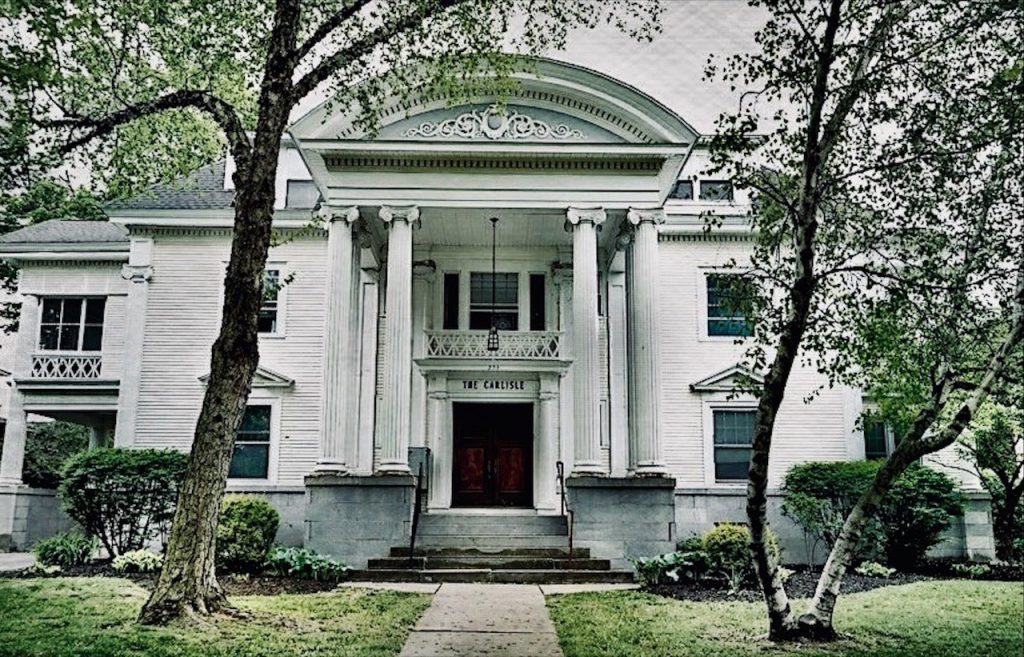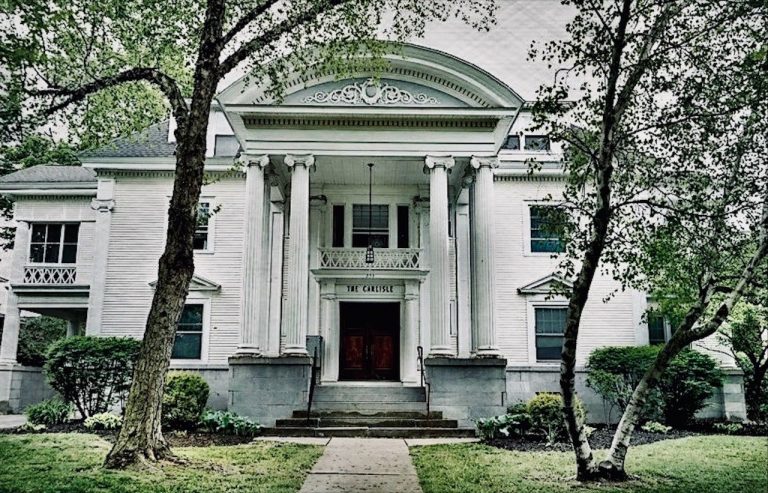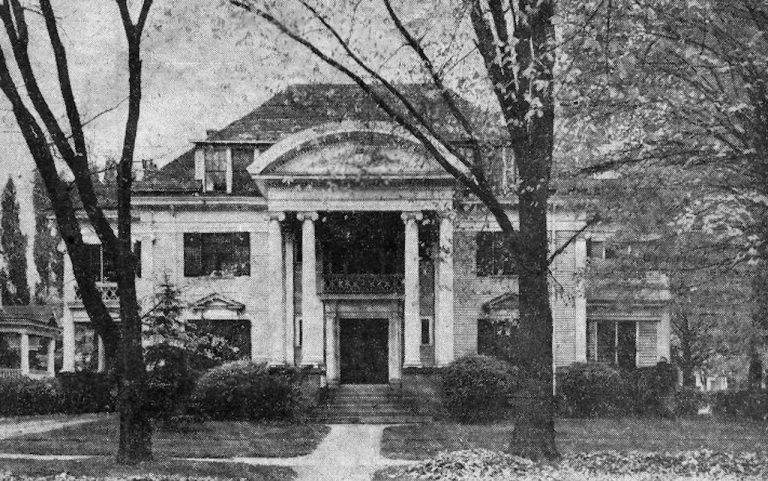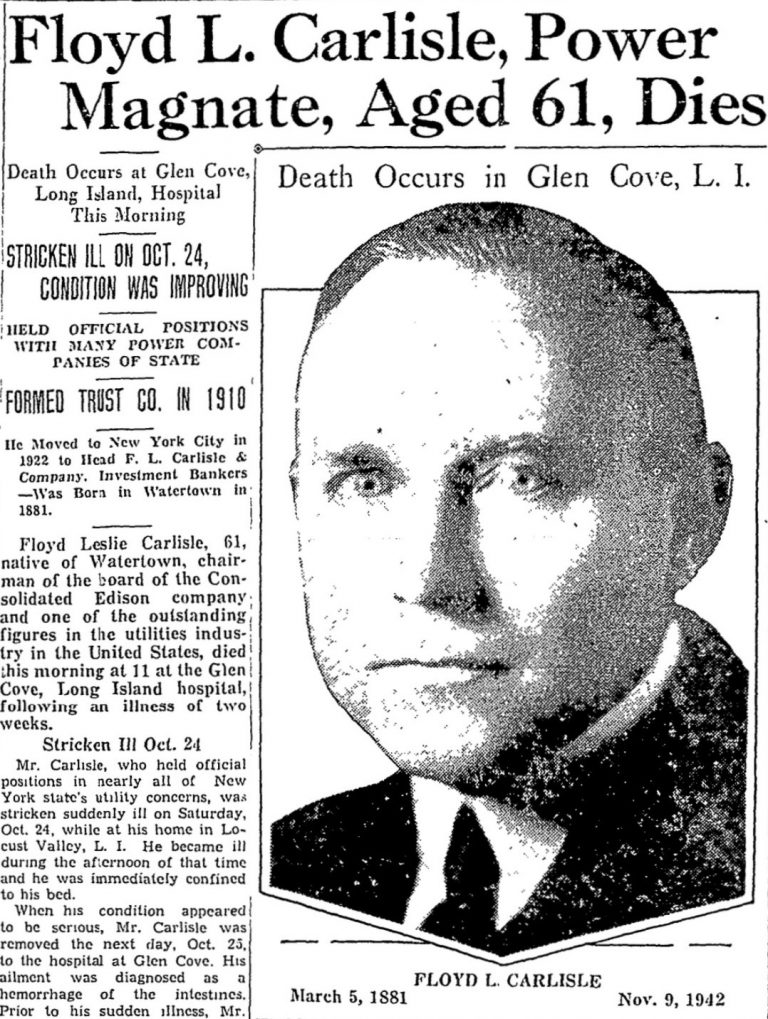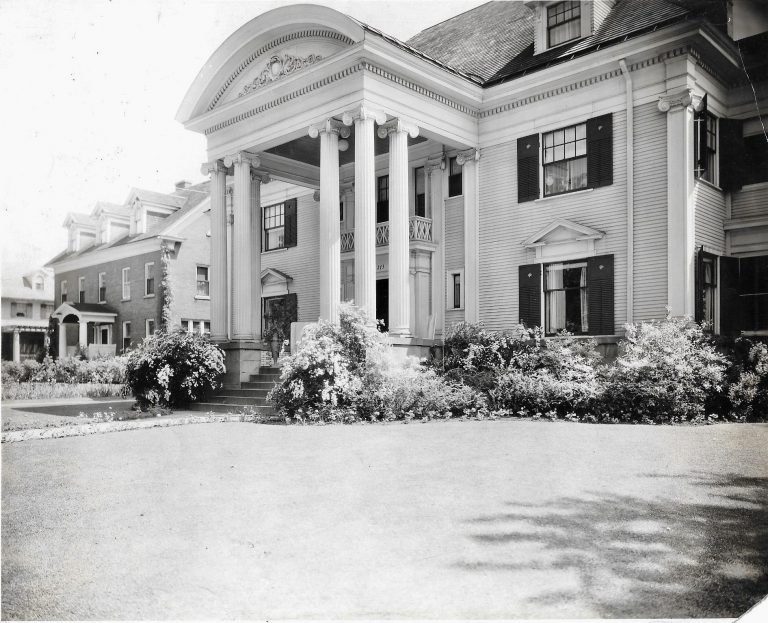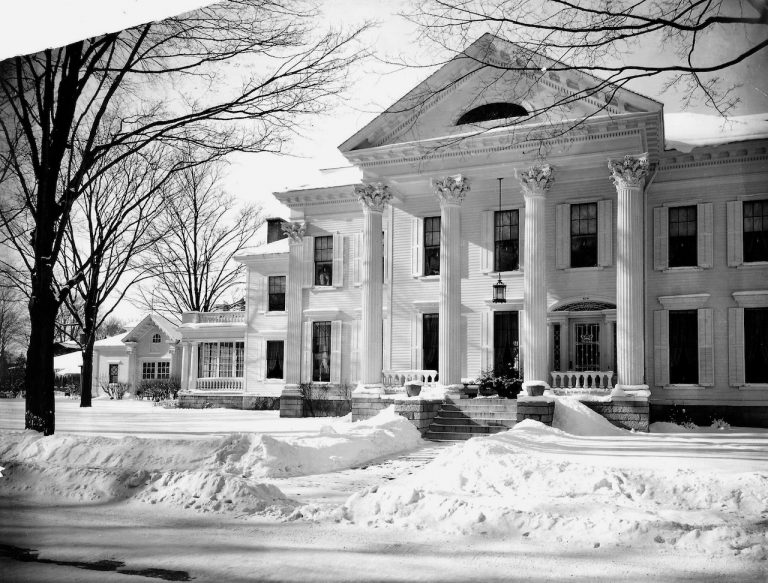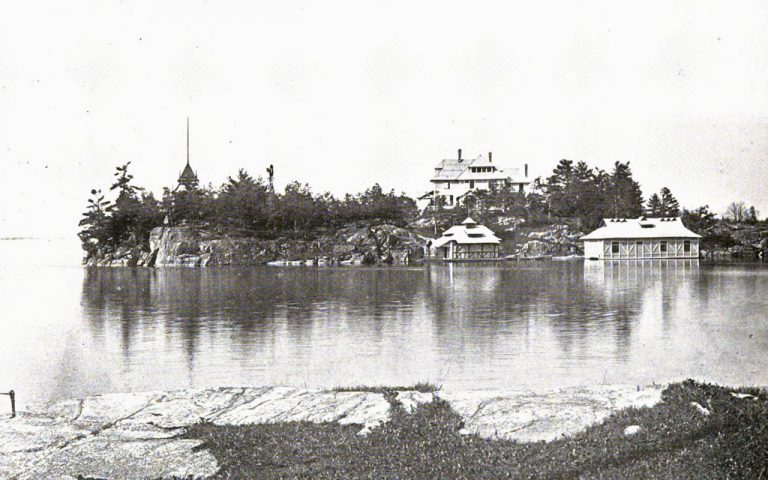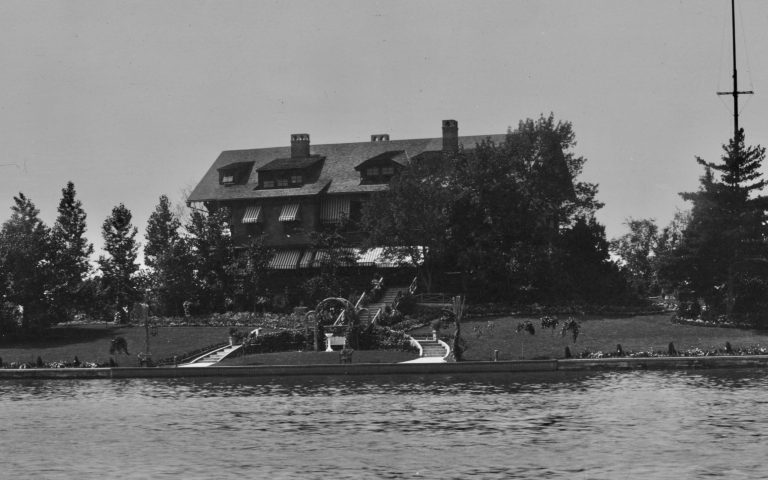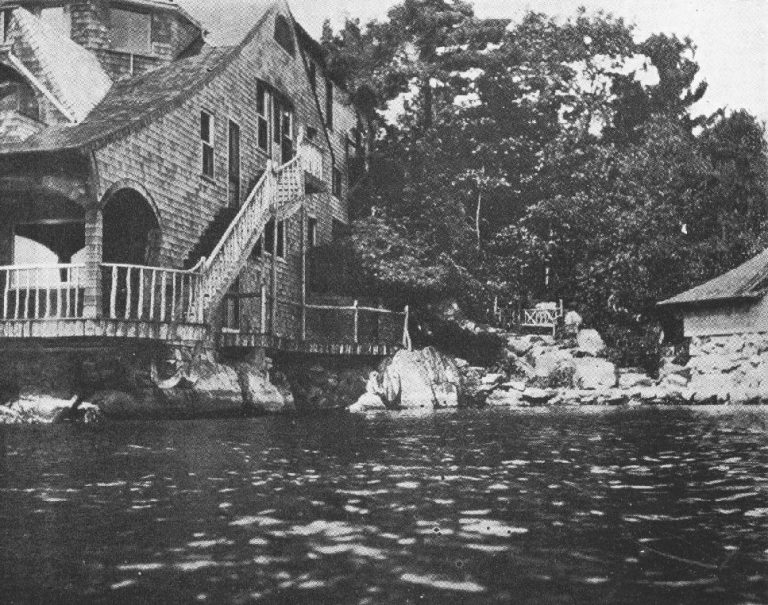The Carlisle At 273 Paddock Street – Named After 3rd Owner, Floyd L. Carlisle
The story of The Carlisle, as it would later become known, starts with Mrs. Grace L Devendorf Hunting purchasing the property at the corner of Paddock and Holcomb Streets in 1905 from Edwin L. and Olive A. Paddock. Grace and her husband, Stanley E. Hunting, founder of the Hunting Company, built what the Watertown Daily Times would call the finest homes of the season in 1906.
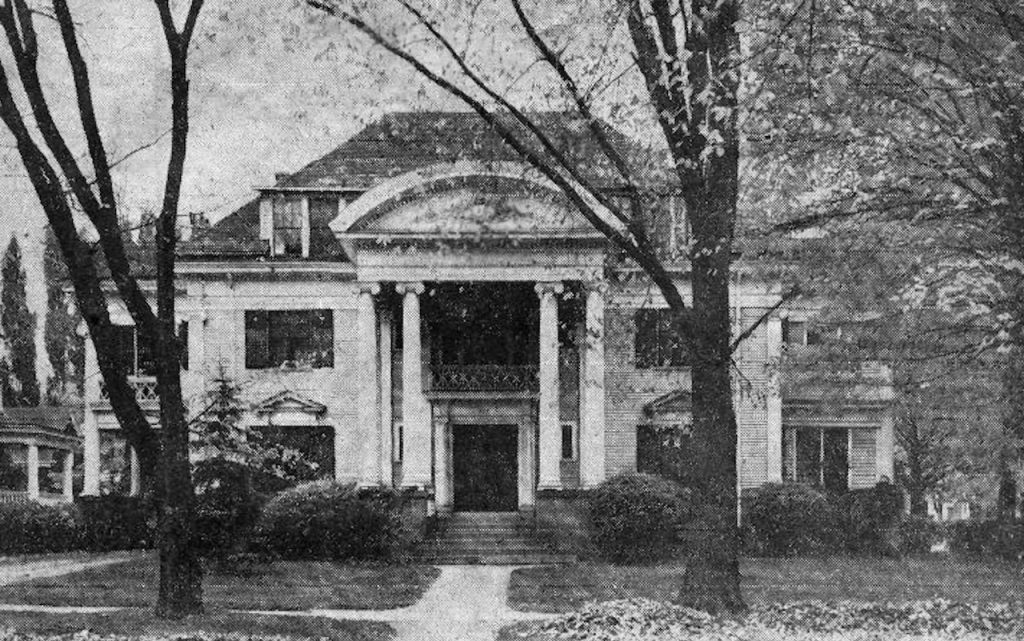
During their 10 years of residency at the 273 Paddock Avenue mansion, Mrs. Hunting often hosted over 150 guests for various card games, including progressive bridge and euchre. Among the guests included members of the Leray de Chaumont chapter D. A. R., of which she was chairman.
Mrs. Hunting sold the mansion in 1916 after Mr. Hunting decided to relocate to Rochester for business purposes. They later relocated to Florida in 1923, where they spent the remainder of their lives. The property was then sold to George H. and Nettie B. Richmond, who, the following day, sold it to the owner by which the mansion’s name is still associated to this day: Floyd L. Carlisle.
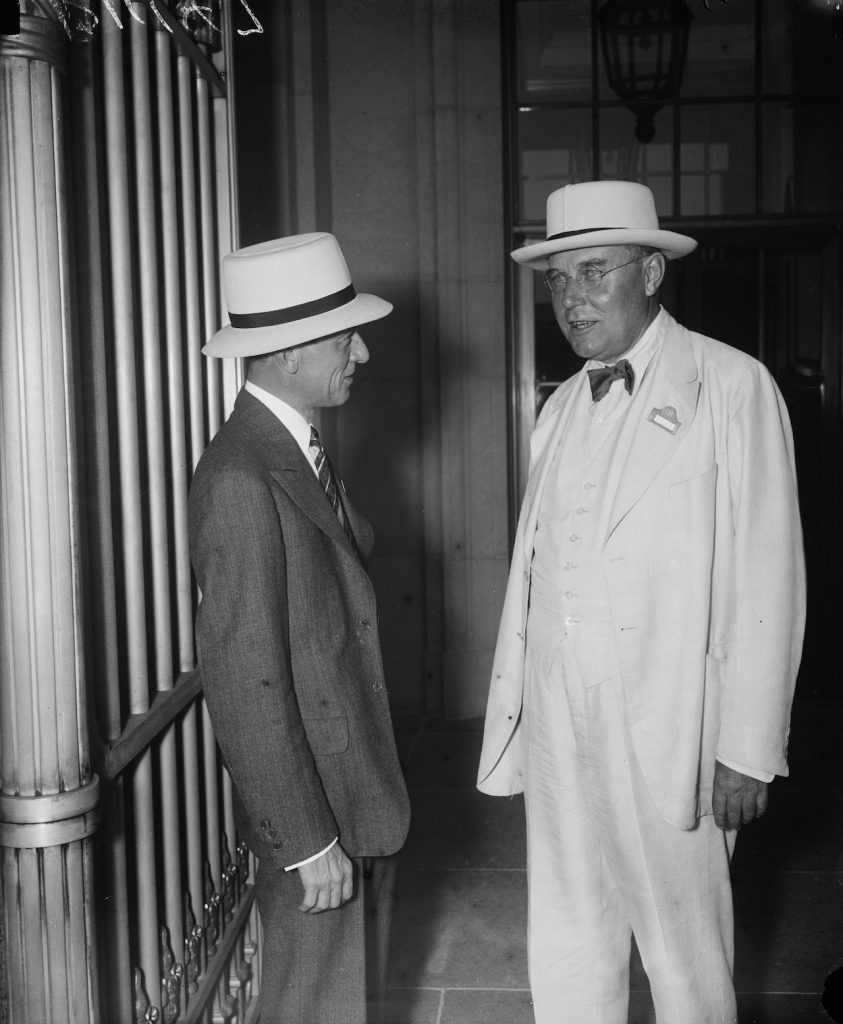
For a true appreciation of who Floyd L. Carlisle was, it’s best to start with the editorial written in the Watertown Daily Times on November 10th, 1942, the day after his death—
It is doubtful if the name of any other man of North Country birth and environment, with the exception of Governor Roswell P. Flower, became so widely known during the last three generations as did that of Mr. Carlisle. The broad electrical system which extended widely throughout the East was generally known as the Carlisle interests. He rose from comparative obscurity to commanding importance in the utilities field.
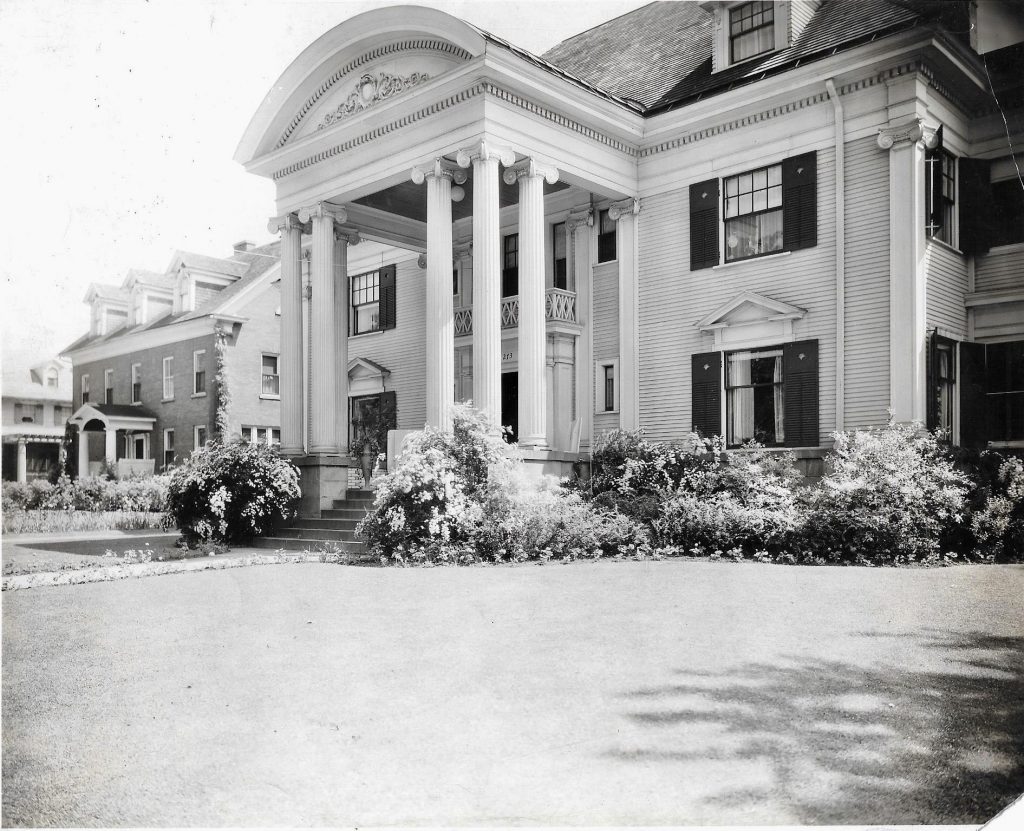
At the age of 17, Floyd L. Carlisle moved back to Watertown after living with his father, William, in Dayton, Ohio, since the age of 8. William, an executive for the Davis Sewing Machine Company, had left Watertown when the business relocated to Dayton. Upon returning home, Floyd would reside with his eldest brother John, who helped him through Cornell University, where he would eventually become president of the senior class.
In a move most dealing with the current pandemic may appreciate, Floyd would battle Cornell University President in 1903 over the decision to keep the school open during the typhoid epidemic. Carlisle went as far as Albany to seek and gain support from Senate majority leader Elon R. Brown in keeping the school closed.
A compromise was reached wherein each student was permitted to return to their home if desired without loss of credit in the university work during the time of their absence. The leadership and fortitude shown at a young age were only a small indication of what Floyd L. Carlisle would be capable of.
Floyd would be admitted to the bar and join his brother John to form the law firm of Carlisle and Carlisle located in the Cleveland Building. In 1910, John became public service commissioner and Floyd stopped practicing law to form the Northern New York Trust Company by merging the National Union Bank and the National Bank & Loan company, serving as its president until 1922. At that time, he became chairman of the board for three years.
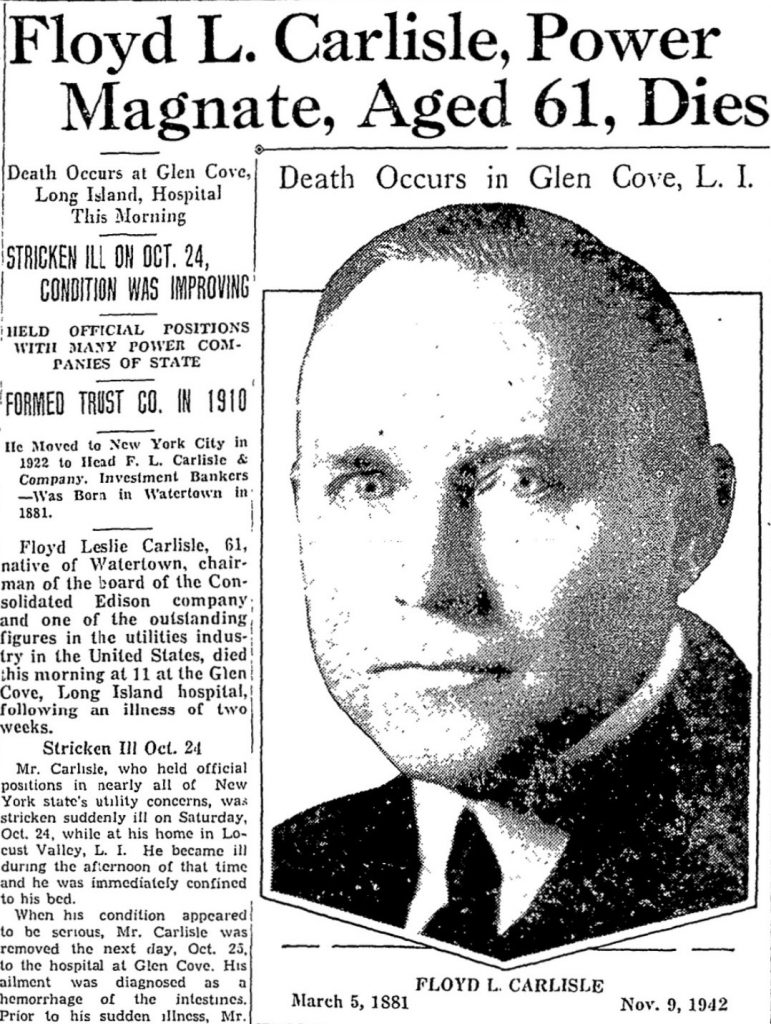
Mr. Carlisle’s obituary in the Watertown Daily Times would sum up his far-reaching accomplishments—
The long list of companies with which he had been affiliated during his life-time includes the St. Regis Paper company. It was he who formed a syndicate in 1916 which purchased control of the St. Regis Paper Company. He became president of the company, which, from time to time since then, has been expanded through acquisitions of other paper companies in New York state.
Heads Power Firm
The St. Regis Paper company had important water power rights, which served to start Mr. Carlisle in the power industry as well. In 1921 he became chairman of the Northern New York Utilities, Inc., now (at the time of his death in 1942) the Central New York Power Corporation.
In 1922 he moved to New York city as head of F. L. Carlisle & Company, investment bankers.
In 1926 the Carlisle holdings in the power and utilities field were consolidated into the Northeastern Power Corporation and in July, 1929, when the Niagara-Hudson Power corporation was formed to consolidate into the Northeastern other principal power companies of northern New York—The Buffalo, Niagara-Hudson Power—Mr. Carlisle became chairman of the merged company.

At the time of his death, Floyd L. Carlisle was chairman of the board at Consolidated Edison Company, commonly referred to as conEdison, or ConEd today, as well as numerous other high-ranking positions, including trustee at his alma mater, Cornell University. He was buried at the family plot at Brookside Cemetery in the Lakeside section near his brother John, who passed away in 1931 as the president of Northern New York Utilities.
When Floyd L. Carlisle and his wife, Edna, left Watertown for New York City, brother John resided at the Carlisle until he died in 1931. John’s widow, Carriel, would remain there until she died in 1933, at which time her three grandchildren from her deceased daughter, Catharine Candace Carlisle Taylor, and her marriage to Frederic Halsey Taylor Sr., sold the property, which ultimately went to Russell D. Kirch and his wife Ellen in 1937 who turn it into apartments (as a note, the property would initially be sold to Russell’s father Frederick‘s company which makes it bit complicated to explain.)
Since being converted into apartments, the Carlisle has changed ownership many times, the most recent ownerships being River Rat Properties, North Country Apartments LLC (Washington Street Properties), and J&M Northside LLC (Jake Johnson Properties). When it was initially turned into apartments, there were four on the first floor, and the second was to remain as is without a need for a zoning change. In 2022, the Carlisle was listed as having 16 units.
